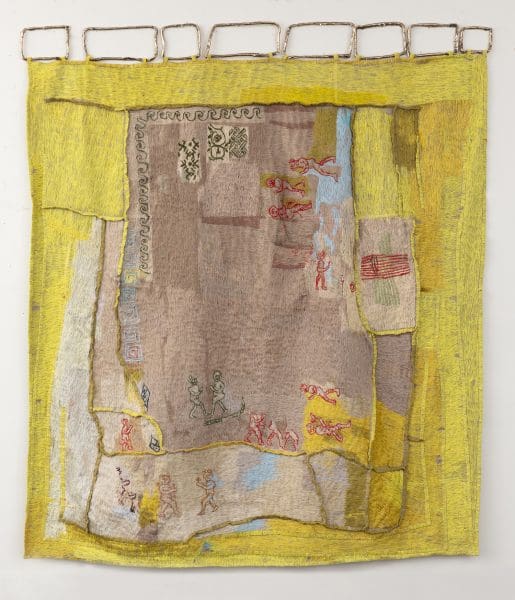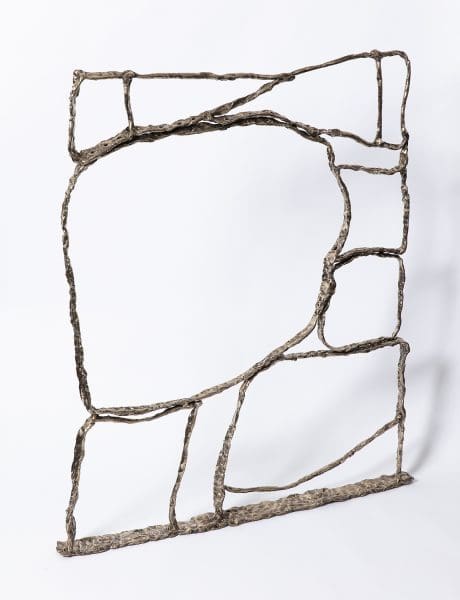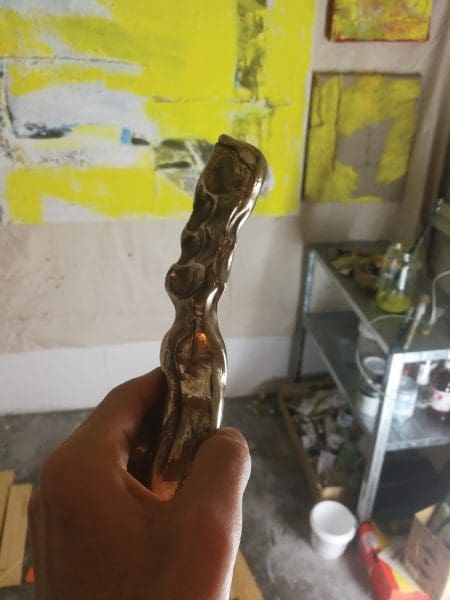
Place-driven Practice
Running for just two weeks across various locations in greater Walyalup, the Fremantle Biennale: Sanctuary, seeks to invite artists and audiences to engage with the built, natural and historic environment of the region.





I speak to artist Teelah George via the phone on a rainy weekday afternoon. In another time, or in a time yet to come, we might have met at her studio or at a local café to talk about her artistic practice and upcoming projects. She’s just moved from Perth to Melbourne, following opportunities and forthcoming residencies, most of which are now on hold because of lockdown. Nevertheless, George has been busy working in her home studio. It has been a while since I have left the house and George’s words over the phone rejuvenate and inspire me to think about art-making and history, and how our experience of time and place are shifting—to think about how we are adapting.

George works across painting, textiles, sculpture and installation to grapple with themes of history and presence, and how humans make and create. She’s interested in the stories behind objects, and how objects are collected, archived and ultimately canonised. Fittingly, she’s currently working on a major new body of work for the Art Gallery of Western Australia in direct response to the gallery’s collection of bronze. Originally researching the collection through visits to the gallery storerooms, George has now delved into online access. The forthcoming exhibition, currently set for 2021, will take the form of a site-specific installation using bronze casts as physical supports for textile works. The bronze will be shaped from hand-formed objects, bringing an element of tactility to their form, while the textile works will visually suggest patina, thereby reflecting the process of ageing bronze.
George’s choice to combine the ‘soft’ materiality of textiles and the ‘hard’ touch of bronze is a deliberate one, and reveals some of the tensions at the heart of her practice. “I like the material distance between bronze and textiles, how they have been used within a historical context and the difference in vulnerability,” George explains. “Both are volatile and change over time, just at a different pace.” While textiles are a material that easily deteriorate over time, bronze by contrast gives an impression of permanence or solidity—a sense of the monumental. George considers bronze, like painting, to be a “loaded artistic medium,” one that carries particular gendered and historical connotations.

Textiles have been—and still continue to be— sidelined within art theory because of a presumption of their domesticity and their historical framing as ‘women’s work’. Bronze sculptures and the tradition of painting, on the other hand, have historically been elevated as expressions of artistic male ‘genius’; mediums that are cerebral more than they are material. George’s recent solo exhibition at Gallery 9 in Sydney (which was installed but never opened due to the COVID-19 lockdown) explored these domestic connotations through a focus on the embroidery sampler. While we both agree this gendered reading of textiles is a tired trope, we nonetheless cannot escape it.
As a self-confessed textile nerd, I admit to George that I’m drawn to her practice. In my experience, those of us who are drawn to textile practice often also display a committed obsession rather than a casual interest, and we speak a particular ‘love language’ when talking about the medium. The way George approaches embroidery is through a process akin to drawing; she uses needle and thread to build up an image through gestural movement. In other ways, her process also reflects collage in the manner that she cuts up sections, pieces them together, and builds up an image through layers of thread. There is a significance of place to her artistic process, as she explains: “I collect threads wherever I am in the world and it becomes routine—part of walking through a city.” There is an element of portability in working with cloth, of being able to work from a suitcase and therefore being able to take your project with you. For George, this transportability allows her to embed her personal experiences into the work, where many pieces eventually carry titles that reflect the site of their creation.

Alongside place, time is a common topic: time as it connects to history, time as a subjective experience, and time as spent in the studio. While the artist applies a defined and regular routine to her studio hours, she still notes the strange sense of timelessness currently being felt. If time was moving quickly before, it feels slower now, more deliberate, with gaps in the spaces between days. This notion of time (or the pause of time) is perhaps felt more obviously under COVID-19, but it is something that has been present in George’s practice from the beginning. For George, embroidery happens like a “composition in slow motion”, and this difference in timeline translates into a charged relationship with time, process and composition. It forces you to slow down—or rather, the pace is dictated by your hands.

Maybe time is something that you don’t notice until you have too much or too little of it. Time, or the feeling of timelessness, is currently front and centre in our collective imagination—just as George’s work always alluded to. Soon, George and I end our hourlong conversation and we say goodbye with promises to meet for coffee in the future. We look forward to a time yet unknown.
THE BOXER IS THE LOVER WITH THE FLOWER IS THE NAKED MOTIF
Teelah George
Gallery 9
12 August—5 September
Teelah George is represented by Gallery 9, Sydney and Neon Parc, Melbourne.
This article was originally published in the July/August 2020 print edition of Art Guide Australia.